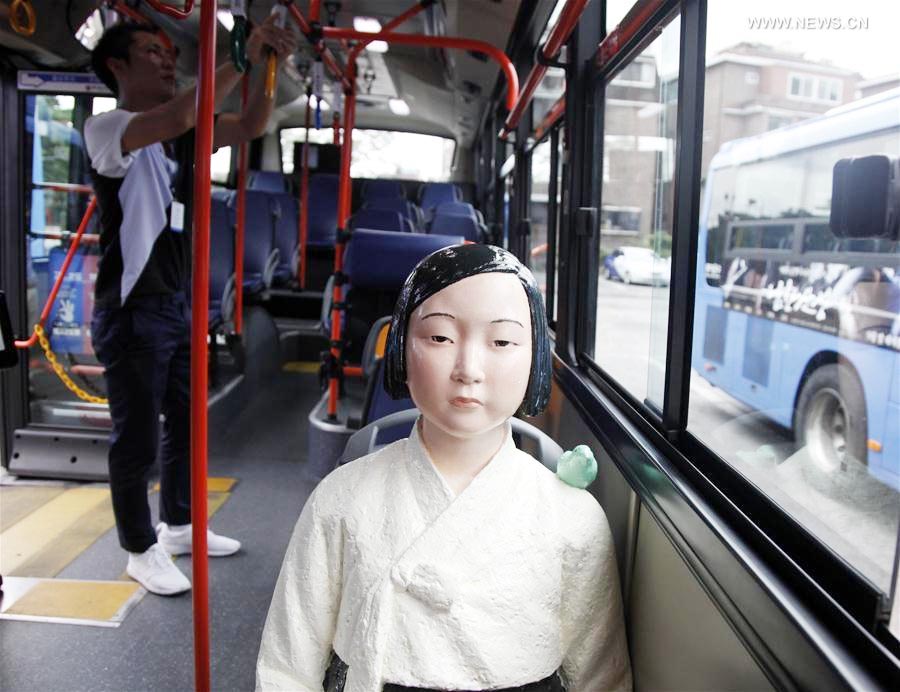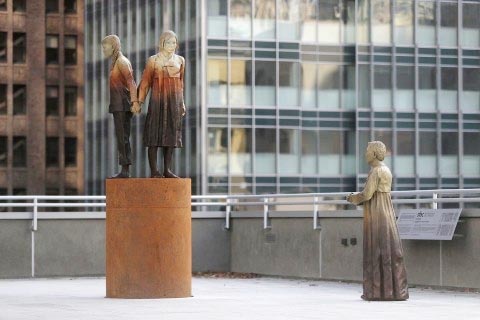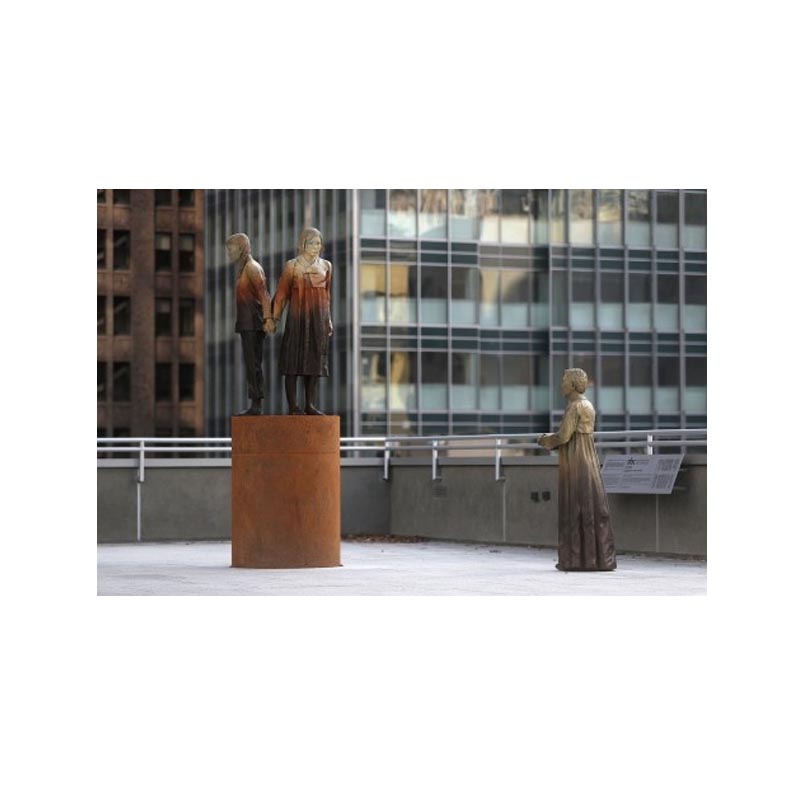
Since 1992, Korean comfort women groups and their supporters had been staging protests at the Japanese Embassy every Wednesday, earning the Guinness Book of World Records title for the longest sustained protest on a single issue.
In 2016, Korea, and in 2017, San Francisco, put up statues of comfort women, both of which sparked controversies, prompting Japan’s recall of ambassadors.
Also in 2016, Japanese Prime Minister Shinzo Abe called on South Korea to remove the statue of the comfort woman, which was placed just outside its consulate in Busan, and reignited a diplomatic row over Japan’s wartime sex slavery. On Jan. 6, 2017, Tokyo recalled its ambassador to Korea and its consul general in Busan. However, both diplomats returned to their posts in April.
Japan argues it is against a 2015 agreement between the neighbors meant to end the hugely emotional and decades-long “comfort women” issue with a Japanese apology and payment of money.
“Japan has already paid ¥1 billion ($8.6 million) as we sincerely fulfilled our obligation. I think it’s now South Korea’s turn to show sincerity in an unwavering manner,” Abe said in a program aired on Jan. 8, 2017 on public broadcaster NHK.
Earlier in 2011, a statue portraying a sitting girl with clenched fists was installed near the Japanese embassy in Seoul, where several former comfort women had been staging regular protests.
Starting in August last year, buses serving several routes in central Seoul have acquired a new and highly controversial passenger: a barefoot “comfort woman,” wearing a traditional hanbok dress with her hands resting on her knees seated on the front. Bus No. 151 in Seoul stops right in front of the Japanese embassy and can be seen everytime the door opens.

In November 2017, Osaka mayor Hirofumi Yoshimura cut sister-city ties with San Francisco because of a new statue put there in September, overlooking a small park downtown. The statue has three figures holding hands on a pedestal, representing girls from Korea, China and the Philippines. Beside them is a likeness of the Korean activist Kim Hak-sun.
The memorial reads: “This monument bears witness to the suffering of hundreds of thousands of women and girls euphemistically called ‘Comfort Women,’ who were sexually enslaved by the Japanese Imperial Armed Forces in 13 Asian-Pacific countries from 1931 to 1945.”
The relationship of trust is gone, said Yoshimura, who called the memorial a form of Japan-bashing.
The statue in San Francisco was not intended as an affront to the people of Japan, said Julie Tang, retired California Superior Court judge and co-chairwoman of the Comfort Women Justice Coalition, which has been working for years to erect the statue. Supporters of the memorial are standing firm.
“[Prime Minister Shinzo] Abe’s policy of denial of the comfort women history and fake news has been now defeated. Let the record stand that neither the San Francisco mayor nor the Board of Supervisors nor the citizens will be bullied by the Japanese government when it comes to protecting all women from sexual violence,” said Tang. “The issue is women’s freedom from sexual violence, especially from rape and assault during wartime.”
When US President Donald Trump visited Seoul in November 2017, South Korea invited Lee Yong-soo, a former comfort woman from Korea, to Trump’s state banquet, setting off a formal protest from the Japanese government.
Judith Mirkinson, president of the Comfort Women Justice Coalition, said it was fitting that the statue was unveiled at a time when many women are emboldened to talk about sexual assault.
Honoring comfort women
Some sectors say the Chinese government is behind the project. This false accusation detracts from the issue of comfort women and makes it a Chinese versus Japanese issue. It is so far, far away from the truth. Chinese Filipinos, just like the Chinese people all over the world, have lamented the fact that with the increasing economic relations between China and Japan, China (the government, not the Chinese people) has softened and toned down its erstwhile vehement protest against the Japanese fascist occupation.
Here in Manila, China’s ambassador did not attend the 2015 opening of exhibits at Kaisa Para Sa Kaunlaran on the 70th anniversary of victory over Japan during WWII. Embassy high officials were also absent this year at the 75th founding anniversary commemoration of the Wha Chi guerrillas, founded in May 1942, who lost lives resisting the Japanese occupation.
As Chinese Filipinos, our roots are deep in Philippine soil and our bonds are with the Filipino people. We join hands with Lila Pilipina, the National Historical Commission, Gabriela, Memorare Manila and other national organizations in supporting the installation of the comfort women statue.
